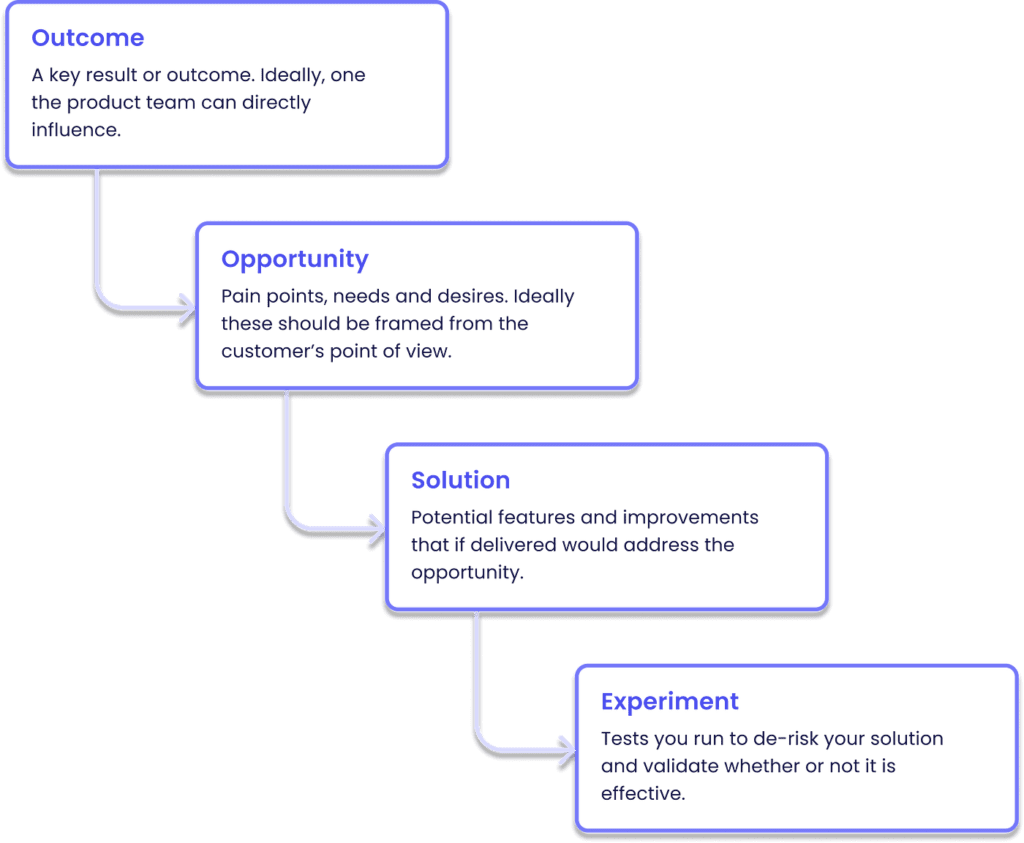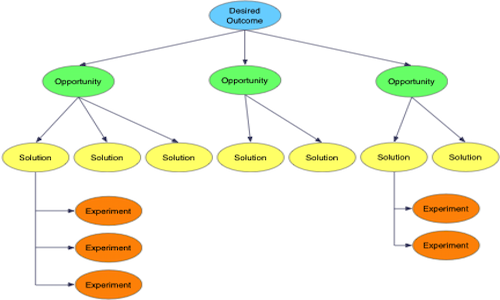Structuring Customer Segments in Your Opportunity Solution Tree: A Comprehensive Guide
-
Bella Williams
- 10 min read

 When it comes to creating an Opportunity Solution Tree (OST), many teams find the process of structuring the opportunity space challenging. It’s common to get overwhelmed, especially when dealing with the B2B space, different customer types, and various pain points; it’s common for teams to struggle with a simple question, “Who is our target customer?”
When it comes to creating an Opportunity Solution Tree (OST), many teams find the process of structuring the opportunity space challenging. It’s common to get overwhelmed, especially when dealing with the B2B space, different customer types, and various pain points; it’s common for teams to struggle with a simple question, “Who is our target customer?”
But the difficulty in answering that question doesn’t mean we can just ignore it. In fact, it’s all the more reason to dig in deeper and do our best to answer it. Think of it this way: Being customer centric is held up as an ideal in many companies these days. But to be customer centric by definition implies that you know who those customers are and what their specific needs are.
However, ignoring the importance of customer segments in your OST can lead to significant problems down the road. Being customer-centric necessitates knowing your customers and understanding their unique needs. In this article, we’ll explore how to incorporate customer segments into your OST, using detailed examples to illustrate the concepts.
The Fundamentals: 5W Questions
To begin, let’s revisit the basic principles of storytelling – the 5W (+1 H) Questions:
- Who?
- What?
- When?
- Where?
- Why?
- How?
These questions are essential for structuring your OST effectively. While it might seem obvious, many OSTs often neglect the “who” aspect. We know the customers are crucial, but is the category “customers” specific enough? The answer depends on your context.
Sometimes, working with the broad category of “customers” is acceptable if their needs remain consistent. However, it’s equally important to dive deeper into specific customer segments when necessary.
1: Uncovering Potential Customers
Example: A SaaS Company
Imagine you’re working for a Software as a Service (SaaS) company with the goal of increasing revenue. While broad customer categories may include individual users, small businesses, and enterprises, delving into segments can provide more clarity. One segment may be small businesses with specific needs, while another could be large enterprises seeking tailored solutions. Identifying these distinctions helps you make informed decisions about customer interviews and product development.
2: Realizing You Have Too Many Segments of Customers
Example: Marketing Technology Company
Consider a marketing technology company offering both free and paid product versions. The product team wants to convert free trial users into paid customers. Initially, they identified three customer segments – marketers at larger companies, digital marketing agencies, and small business owners.
However, during discovery, they discovered that these segments had remarkably similar motivations and needs. In this case, creating separate segments on the OST didn’t add value, highlighting the importance of flexibility and adaptability in your approach.
3: Bringing More Clarity to Your Opportunities by Assigning Them to Specific Segments
Example: Recruiting-related SaaS Company
In this scenario, a recruiting-related SaaS company aims to increase revenue. To prioritize effectively, they needed to consider who would benefit from each solution and how it would contribute to revenue growth. Some opportunities might have a more significant impact on their desired outcome. Quantifying the potential size of each path to increased revenue allowed them to compare the relative contribution of focusing on different customer segments.
Tying It All Together
Incorporating customer segments into your Opportunity Solution Tree helps provide critical context. It allows you to answer the “who” question explicitly and assess, size, and prioritize among customer segments. This context is essential for influencing stakeholders and partners and ensuring your solutions have a substantial impact.
By explicitly addressing the 5W questions in your OST, you equip yourself with the storytelling elements needed to persuade others about the importance of your chosen opportunities. You also gain a deeper understanding of the context in which your solutions will be used and their potential impact on your desired outcome.
Conclusion
Structuring your Opportunity Ssolution Tree with well-defined customer segments is a strategic approach that enhances your ability to address specific customer needs. It prevents you from making risky assumptions and allows you to focus your efforts where they will have the most significant impact. Remember that your OST is a dynamic tool that should evolve as your understanding of customer segments deepens and as you progress toward your desired outcomes.







